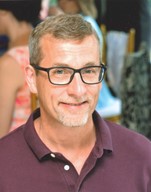 William G. Fahrenholtz, Ph.D.
William G. Fahrenholtz, Ph.D.
Materials Science and Engineering
Missouri University of Science and Technology
Friday, Nov. 18th at 3pm
3550 MEK
ABSTRACT: Ultra-high temperature ceramics are a class of materials that are proposed for use in conditions that are beyond the capabilities of existing materials. Desired future capabilities such as hypersonic flight, concentrated solar power, and nuclear fusion expose materials to extreme temperatures, heat fluxes, and neutron irradiation levels. Historic research identified transition metal boride, carbide, and nitride ceramics as candidates for use at temperatures of 2000°C or higher.Recent results from our laboratory have addressed fundamental structure-property relationships at elevated temperatures, explored fusion welding, and examined solute distributions in boride ceramics. The presentation will also discuss thermodynamic aspects of the formation of carbide-based ultra-high temperature ceramics and vacancy ordering in zirconium carbide. Finally, emerging research trends will be presented.
BIO: William G. (Bill) Fahrenholtz is a Curators’ Distinguished Professor of Ceramic Engineering in the Department of Materials Science and Engineering at the Missouri University of Science and Technology and the Editor-in-Chief of the Journal of the American Ceramic Society. He earned B.S. and M.S. degrees in Ceramic Engineering at the University of Illinois at Urbana-Champaign in 1987 and 1989, respectively. He completed his Ph.D. in Chemical Engineering at the University of New Mexico (UNM) in 1992. He was elected a Fellow of the American Ceramic Society in 2007 and was named Editor-in-Chief of the Journal of the American Ceramic Society in January 2017. Bill teaches courses on thermodynamics and technical communication. His current research focuses on the processing, characterization, and mechanical testing of advanced structural ceramics for use in environments with extreme thermal loads, mechanical forces, and/or chemical reactivities. He has published over 210 papers in peer-reviewed journals and given over 100 invited presentations on his research.